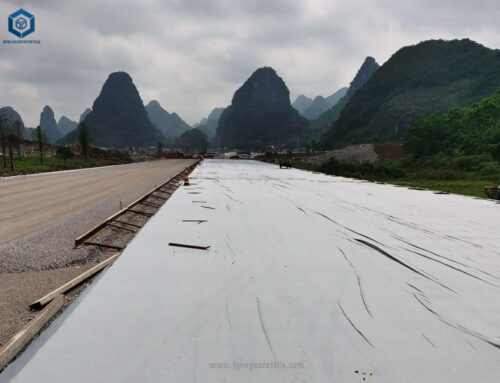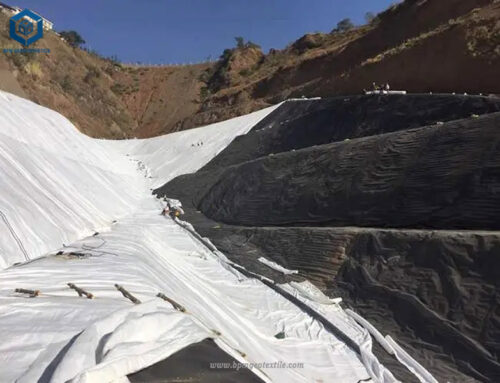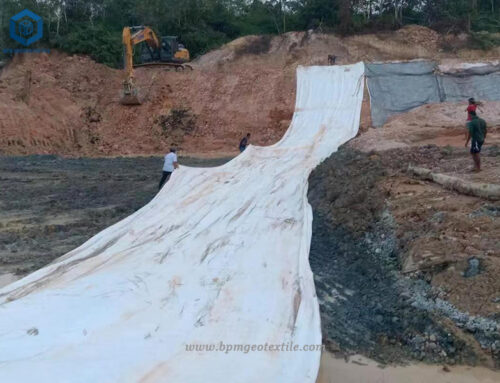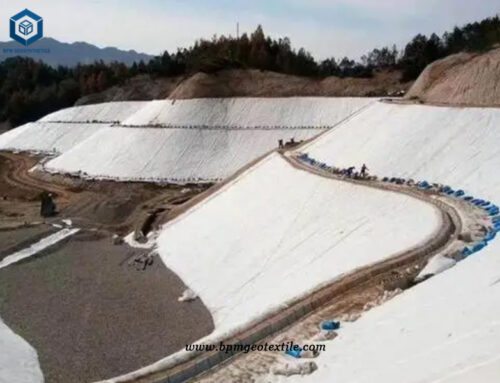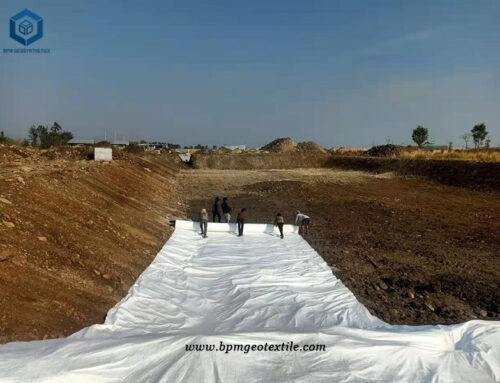Case Study
- Location – Thailand
- Product(s) – Filament Non woven Geosynthetic Cloth
- Application – Landfill Project
Issue
The leachate produced by the garbage in the landfill site pollutes the environment, pollutes the groundwater, and makes people sick and seriously injured after the soil is polluted.
Solution
PET filament geosynthetic cloth is made of continuous polyester filament by needling and thermal bonding consolidation process. It is a strong nonwoven geotextile with good dimensional stability and effective resistance to construction stress. BPM PET filament nonwoven geosynthetic clothis widely used in the separation, filtration, drainage, protection and reinforcement of civil engineering and building engineering project. We manufacture non woven geosynthetic cloth with different strength, thickness and length of each volume to meet your engineering requirements.
Our Thailand customer sent inquiry for geotextile to us. We talked about his project and recommended PET Filament Nonwoven geosynthetic clothfabric for his project. We sent him samples of different specifications free of charge.Our customer was very satisfied and verified the specification and order quantity through email. We settled the payment terms and delivery time through negotiation. Finally, we completed the booking shipping, production and shipment within 10 days.
Specifications of Filament Non Woven Geosynthetic Cloth for Landfill Project in Thailand
- Total PET Filament Geosynthetic Cloth quantity – 33,320m2
- PET Filament geotextile specification – 600 g/m2
- Each roll size is 5.95m*50m
- 2*40HQ containers
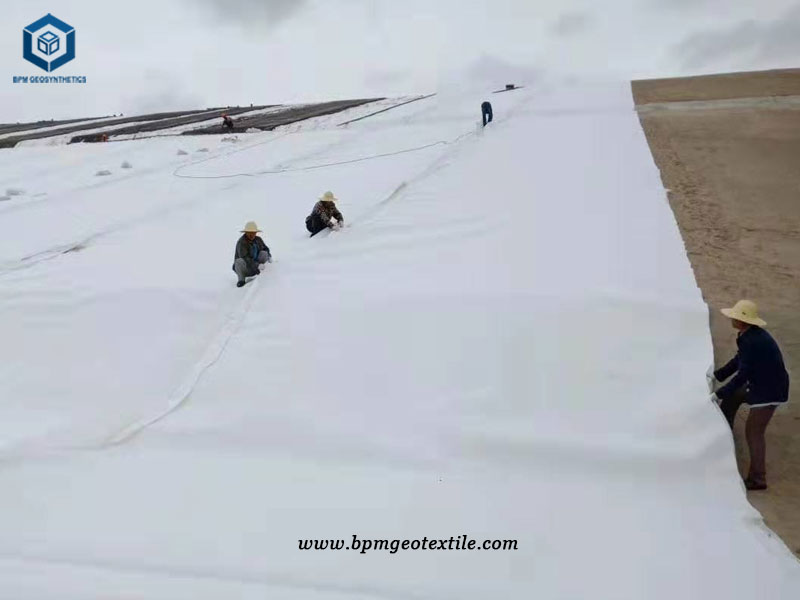

Function of PET Filament geotextile:
1. Isolation. Use polyester filament fiber needling method to separate building materials (such as soil particles, soil, soil and concrete, etc.) to disperse the corresponding physical personality (such as size, range, saturation and density, etc.). Ensure that there is no loss or mixing between two or more materials, ensure the original shape and performance of raw materials, and make the structure more superfrequency.
2. Filtration (inverted filtration). PET Filament geosynthetic cloth has good permeability and permeability, so that the liquid flows through, and can effectively guide soil particles, sand dust, small stones, etc., so as to ensure the stability of normal projects.
3. Drainage. PET Filament geosynthetic cloth has excellent water conductivity, which can create a water conduit inside the soil particles, and can discharge the remaining water and oxygen in it.
4: Reinforcement. The use of geosynthetic cloth expands the toughness and impact resistance of soil, improves the stability of building structures, and improves the quality of soil.
5: Protection. When water rushes into the soil, it can effectively spread, interact or decompose the concentrated stress, resist the impact damage of the soil and protect the land.
6: Anti penetration. The composite impermeable material formed by the fusion of geomembrane plays the role of stab prevention. Excellent tensile strength. Good permeability. High temperature resistance. Anti freezing. Anti aging. Corrosion resistance. Worm proof. PET Filament geotextile is a kind of commonly used geosynthetics. Reinforce the railway subgrade. Maintenance of highway pavement. Gymnasium. Protection of dams. Isolation of hydraulic structures. Suidong. Coastal beach. Reclamation. Environmental protection, etc.
Geosynthetic Cloth construction method and precautions
Do not drag or drag the geosynthetic cloth during transportation to avoid stabbing by sharp objects.
- Before construction, the substrate should be cleaned. If conditions permit, it can be washed with water to ensure that the substrate is free of any impurities. If there are cracks in the base, it can be repaired with asphalt. Otherwise, the effect of pavement and final use will be affected in the later stage.
- When paving, the geosynthetic cloth should be straightened as much as possible, and when paving, it should be as flat as possible, because in this way, it can be as close to the base as possible. If there is oil on the bottom, you can roll it with a roller brush, so that it will fit better, and then sprinkle some melon seeds or coarse sand on it.
- When paving, it is necessary to ensure that the woven fabric is dry, because the effect will be greatly reduced after the rain is wet. If it is wet, it should be paved after it is completely dry. At the same time, smoking is not allowed during laying, which will be more dangerous. When just finished, don’t walk on the surface, don’t move tools, and don’t keep heavy objects on it.
- There should be some overlap at the lap joint, and the effect will be better after layer by layer pavement. The joint can be welded, so the stability is better. In addition, pay attention to the slope and the position of the corner, where the splicing length can be shortened to avoid wrinkles.
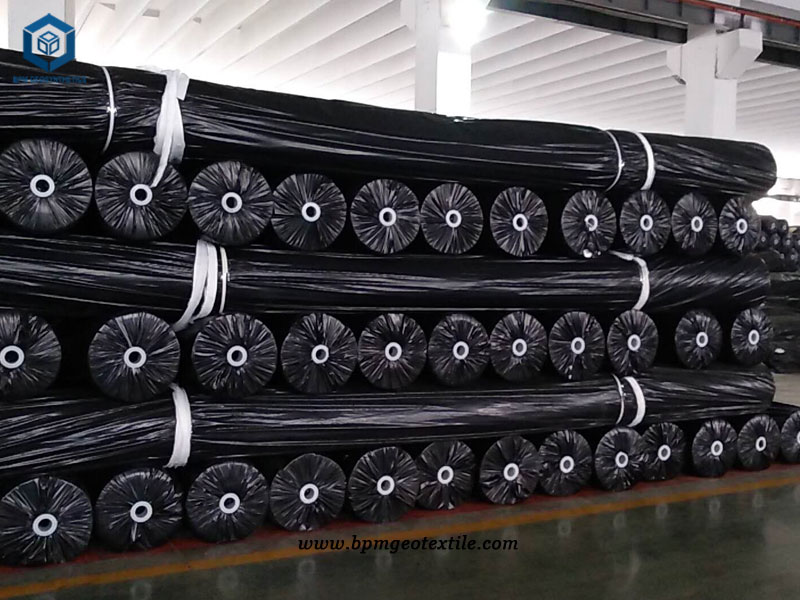
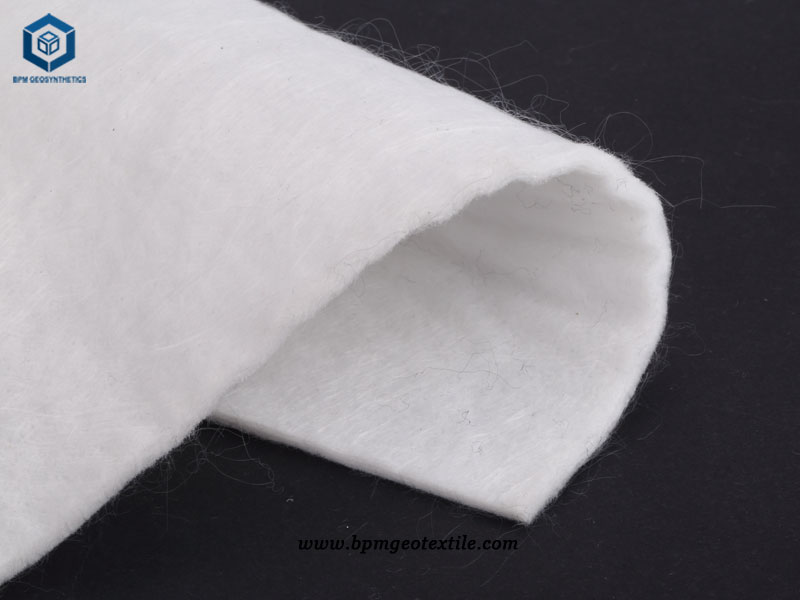
Construction method
- It should extend from the bottom to the high position, and should not be pulled too tightly. There should be a half of the remaining width for local sinking and stretching. Considering the actual situation of the project, the slope is paved from top to bottom;
- The longitudinal joints of two adjacent frames shall not be on the same horizontal line, and shall be staggered by more than 1m;
- The longitudinal joint should be more than 1 or 50m away from the dam toe and bend, and should be set on the plane;
- Slope first and then the bottom of the site; What are the characteristics and functions of geotextiles used in construction;
- When laying the slope, the film spreading direction should be basically parallel to the slope line.
About BPM
BPM manufactures and wholesales many types of effective and states of the art geotextile, geomembrane, and other geosynthetics to over 36 countries. BPM geosynthetic products are widely used across a variety of industries including waste containment, water containment, aquaculture, industrial project, energy project and mining projects, etc. BPM main customers are from Australia, France, Sweden, UK, Hungary, New Zealand, Poland, Mexico, Ecuador, Brazil, Pakistan, Bangladesh, Thailand, Vietnam, Malaysia, Indonesia, Singapore, Philippines, Sri Lanka, India, UAE, Saudi Arabia, Qatar, Kenya, etc.
BPM is not only manufacturing best quality geosynthetic products but also providing professional design and installation service. OEM, ODM, custom development and fabrication are also available. If you have any questions or inquiries, please fill and submit the following form, we will reply as soon as possible.

